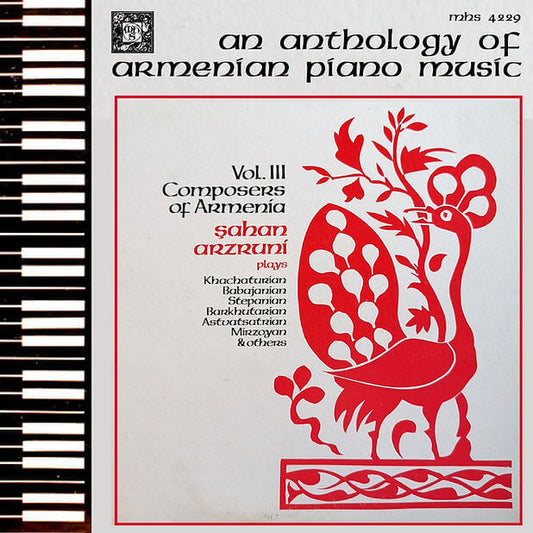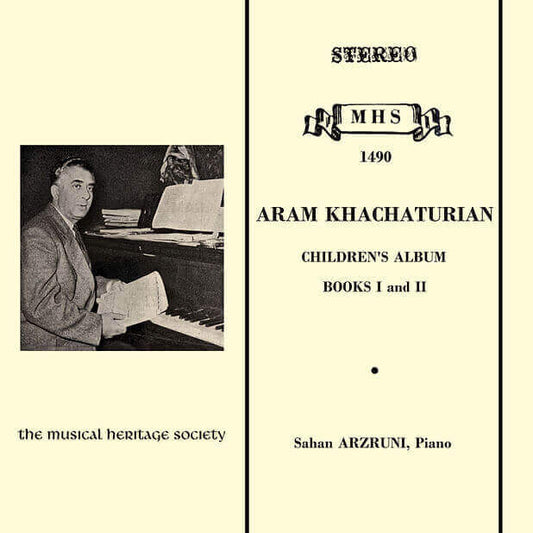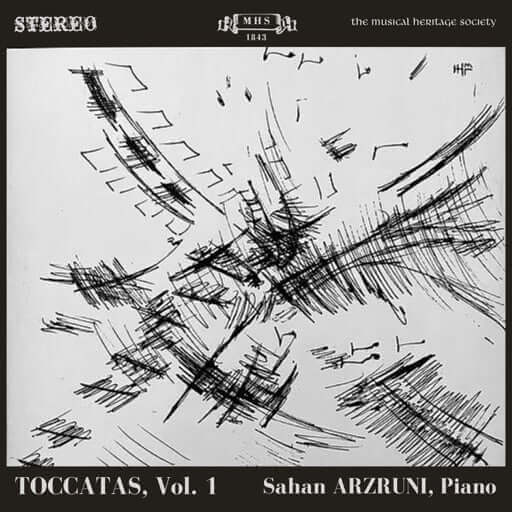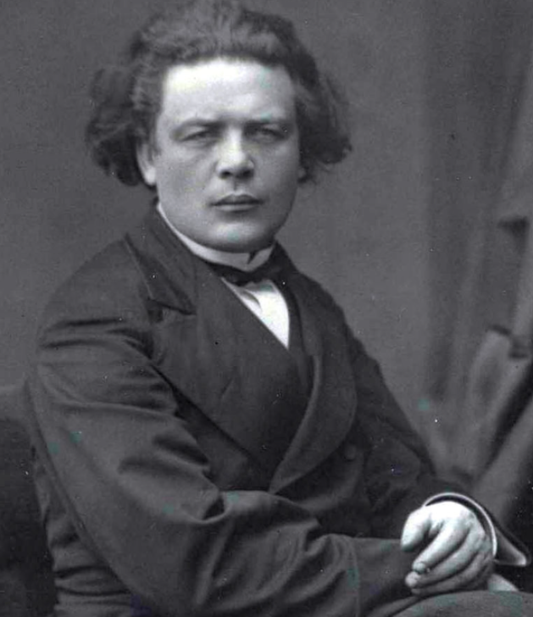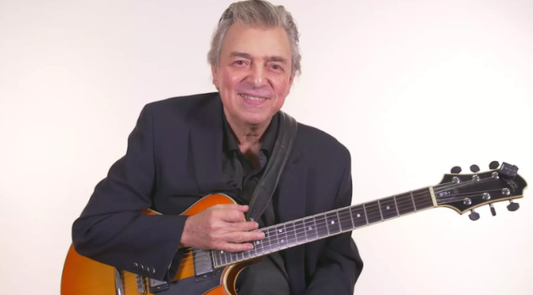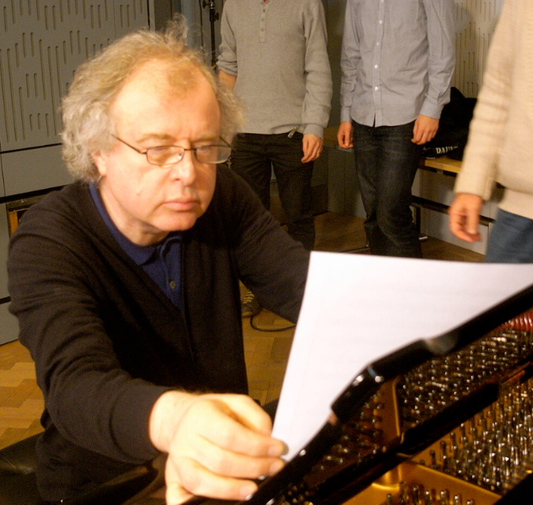Collection: ARAM KHACHATURIAN (1903-1978)
Aram Ilyich Khachaturian (1903-1978) was one of the leading Soviet composers of the 20th century, celebrated for his vibrant, rhythmically charged music deeply infused with the folk traditions of his native Armenia and the wider Caucasus region. Alongside Dmitri Shostakovich and Sergei Prokofiev, he is often considered one of the central figures of Soviet music, though his style remained more overtly rooted in folk idioms and Romantic gestures.
Born in Kojori, near Tiflis (now Tbilisi, Georgia), into an Armenian family, Khachaturian grew up in a multicultural environment rich with the diverse folk music of Georgians, Armenians, and Azerbaijanis. Unlike many composers, he had little formal musical training in his childhood, though he was fascinated by the sounds around him and taught himself to play the tenor horn. It wasn't until 1921, when he moved to Moscow with his brother (a theatre director), that his musical journey truly began.
Initially studying biology at Moscow University, Khachaturian simultaneously enrolled at the Gnessin Musical Institute in 1922, where he studied cello and composition, finally receiving systematic training. His burgeoning talent led him to the prestigious Moscow Conservatory in 1929, where he studied composition with Nikolai Myaskovsky and orchestration with Reinhold Glière. During these formative years, he absorbed the Russian classical tradition but crucially began integrating the distinctive melodic contours, modal flavors, and energetic rhythms of Armenian and other Caucasian folk music into his work.
Khachaturian's rise to prominence began in the 1930s. His Trio for Clarinet, Violin, and Piano (1932) attracted favorable attention, but it was his Piano Concerto (1936) that established him as a major new voice. This work, full of dynamism, lyrical Armenian-inflected melodies, and brilliant pianism (including an unusual flexatone part in the slow movement), quickly gained international popularity. The similarly successful Violin Concerto (1940), dedicated to David Oistrakh, further cemented his reputation. Known for its soaring lyricism and virtuosic demands, it won the Stalin Prize in 1941 and remains a staple of the repertoire.
During World War II, Khachaturian composed patriotic works, including his Symphony No. 2 ("The Bell Symphony," 1943). However, his most enduring work from this period, and arguably his most famous creation overall, originated in the ballet Gayane (1942). Originally conceived as a patriotic tale set on a collective farm, the ballet score is a treasure trove of colorful dances. Among them, the wildly energetic and instantly recognizable "Sabre Dance" became a global phenomenon, almost overshadowing the composer's other achievements.
Despite his success and adherence to many tenets of Socialist Realism (the officially sanctioned artistic style emphasizing accessibility and optimism), Khachaturian, along with Shostakovich and Prokofiev, was publicly denounced in the 1948 Zhdanov decree for alleged "formalist" tendencies – meaning music deemed too complex, dissonant, or detached from the needs of the people. This was a severe blow, forcing Khachaturian, like the others, to publicly confess his "errors" and adapt his style, though he arguably had less distance to travel back towards official approval than his colleagues. He was soon rehabilitated.
His later career saw the creation of another major ballet, Spartacus (1954, revised 1968). Though less consistently popular than Gayane, its score contains powerful music, including the lushly romantic Adagio of Spartacus and Phrygia, which gained wide familiarity through its use in film and television (notably the British TV series The Onedin Line). He also composed a Cello Concerto (1946) and later ventured into a series of Concerto-Rhapsodies for various solo instruments with orchestra (violin, cello, piano) in the 1960s.
Beyond composing, Khachaturian was active as a conductor, often leading performances of his own works internationally. He also taught composition at the Moscow Conservatory and the Gnessin Institute and held various official posts within the Union of Soviet Composers.
Aram Khachaturian's musical signature is unmistakable: fiery rhythms, brilliant and often sensual orchestration, melodies rich with the intonations of Armenian folk music, and a direct, often extroverted emotional appeal. While sometimes criticized for a perceived lack of structural sophistication compared to some contemporaries, his ability to create immediately captivating and deeply evocative music earned him lasting popularity worldwide, successfully bringing the sounds of the Caucasus onto the international concert stage.

